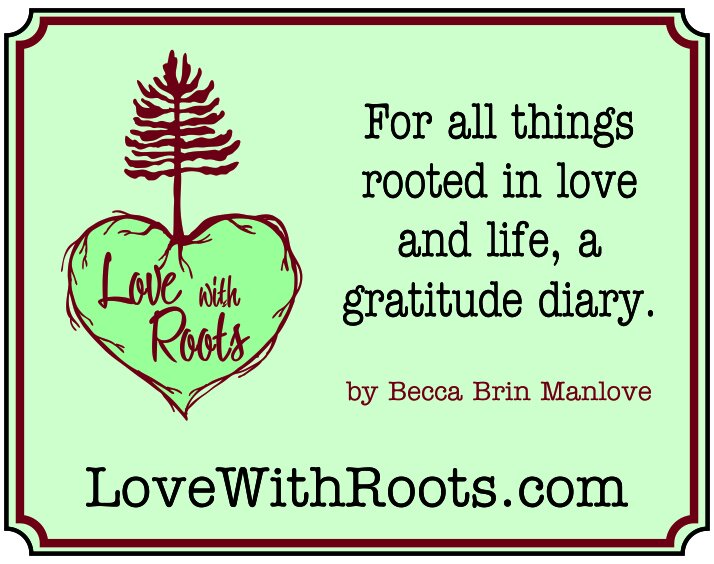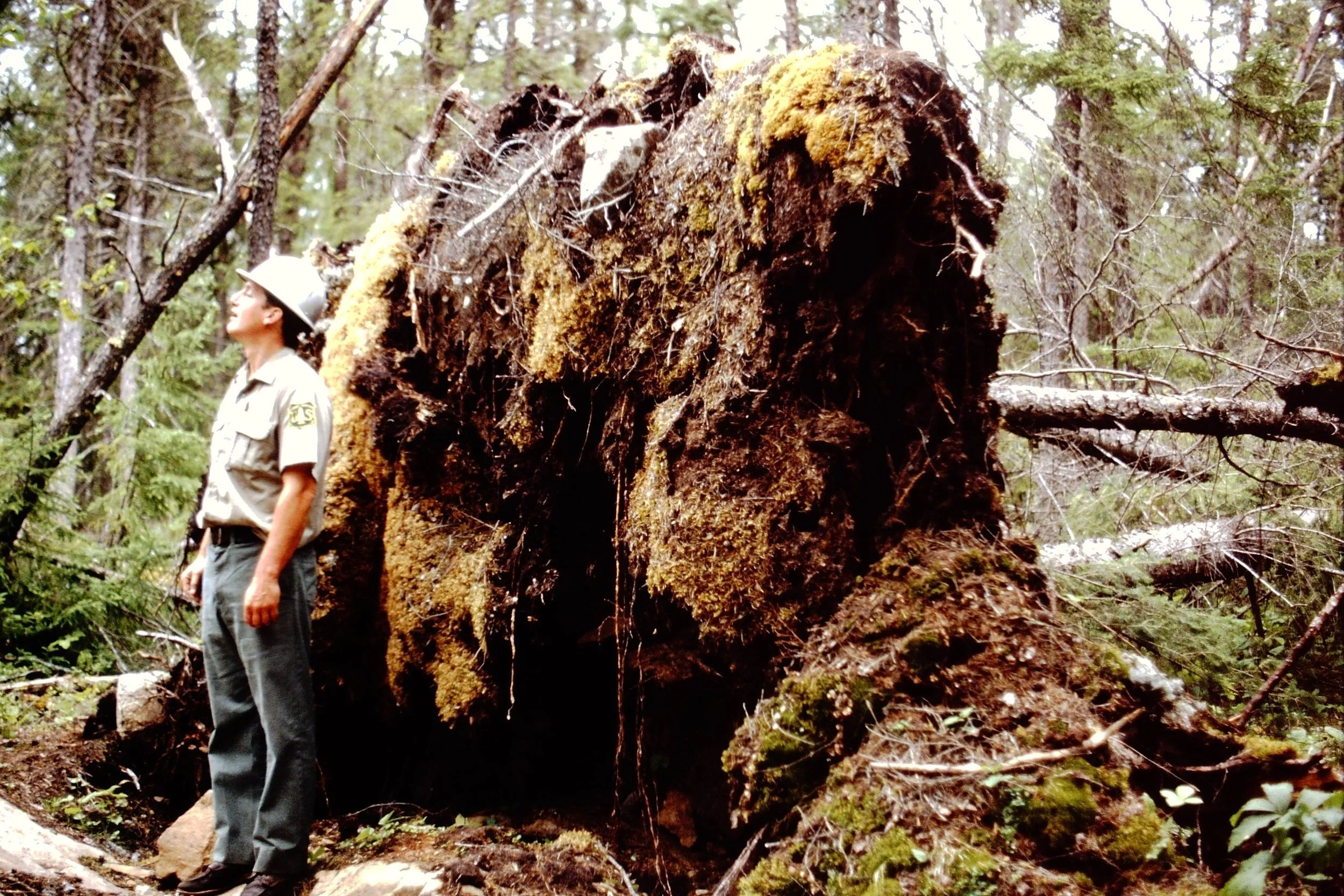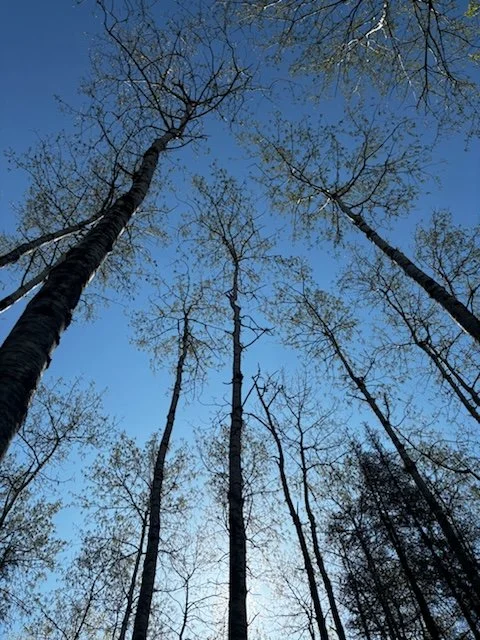Robert and Roots: Payback Isn't Always Hell
Photo by Keith Smith Mike and a Rootball, 1984
My dad, Robert, made a valiant effort to live with Mom in her apartment in Memory Care. But he couldn’t lie to her and she couldn’t remember that she had Alzheimer’s. “Frances, you have to stay here. You have the Alzheimer’s.”
“Robert, I don’t have Alzheimer’s. YOU do.” They’d been married sixty years, raised five kids, and helped raise many of their twelve grandkids. Mom was a Teacher--Mom and Grandma were simply other titles for her profession. Dad was a funny, tenacious, French Canadian by way of three generations on Kansas farms. They were both born during the Dust Bowl days: him on a farm in northwest Kansas and her on a dairy farm in the panhandle of Texas. His parents somehow kept eight out of ten kids alive to adulthood and hers had a similar impossible success rate. He had a durable spirit. But after six months of life in a memory care unit with sixteen other people who could converse only in word salad, he met me at the door to their apartment with a small duffel bag. Mom swarmed the room like hornets from a disturbed nest, threatening divorce, suicide, and murder.
“Dad, why didn’t you tell her you were just going on a fishing trip or something?”
“Rebecky, you are going to get caught in your lies.” Deep in Alzheimer’s, Mom might not recognize me as her oldest daughter, but her Teacher-radar was intact. She could tell when I was lying. So, Dad always told her the truth. “Let’s get out of here. They’re serving damn tuna fish again for supper.”
Do you know the riddle of how to get a fox, a goose, and a sack of corn, one-by-one across a river in a small rowboat? Dad didn’t have Alzheimer’s but his sense of direction and some decision-making skills were impaired from a stroke he’d had a few years earlier. He had a car, but he could get lost driving to my house in the woods. Sending him off by himself was dicey. And yet, I couldn’t just leave Mom, locked in the care center, in her agitated state.
“Dad, please wait out on the porch. I’ll call David. He wanted to go out to eat with us tonight anyway.” Dad gave me an amused side-eye. Yes, I was lying again. But luckily David, my boyfriend, answered his phone and dashed into town to help me out. Together we worked out the puzzle of three cars, two drivers, one pissed-off woman, and one little old man who thought he should drive.
The next five months were wild rides--often literally--and wild blessings. I had neither the heart nor the courage to take away Dad’s keys. And although he loved living in the woods, he also liked going to restaurants and to church. I drew a map of the route between my home and Carefree where Mom lived.
David’s cabin was down the road from my house. He told me with a twinkle about Dad’s daily visits. He’d hear Dad’s little feet tripping up the stairs. With his Kansas accent, Dad would call out, “Hey Dave. Wanna get some breakfast?” After the first time, when turns came up unexpectedly and parking was an adventure, David insisted on driving.
The blessings were times with my dad. During our evenings together, Dad told me stories. One of our favorites was about me as a baby. Mom went back to her teaching position just after I was born. Dad was my daytime caregiver. A lady in their apartment building helped Dad out whenever he had parenting questions. One day he carried three-month-old me to her door. She asked about a bloody spot on his nose. “She bit me.” He told her he was kissing my cheek when I turned suddenly and chomped the bridge of his nose.
“She couldn’t believe you’d cut a tooth already. But you had. And it was sharp!”
In late July, Dad bought a spanking new pontoon boat and trailer. A few weeks later, he went out on his pontoon with a friend and caught a few fish. When he traipsed into the woods to bury fish guts, he fell and hit his head. I found him in his recliner with a gash on his bald head. He refused to be taken to the emergency room, but the next morning he let me take him into the clinic. The wound was still bleeding so a doctor stitched him up. The rest of the day was a whirlwind of activity, but finally we settled onto the couch to share some popcorn and stories. Dad surprised me when he said he was going to bed. I was usually the first one to turn in. Then I heard him call for help. I found him on the bathroom floor, unable to stand. I held him in my arms, trying to help him up.
He said, “Beck, I’m sorry you have to take care of me.”
I said, “Remember when I bit your nose?”
He snorted. “Payback’s hell, ain’t it?”
At the emergency room, the doctor discovered an off-the-chart white blood cell count. Dad had undiagnosed leukemia. He died that night of a brain bleed. I regretted my flippant response to taking care of him. Those were the last real words we said to each other.
When we were thinking about an appropriate urn, my daughter came up with the idea to bury her Grandpa’s ashes in a tackle box. David found a large, old metal tackle box. He showed me a tiny label on it that said, “My Buddy.” We couldn’t know that we would lose David, too, to a heart attack just four months later. The whole family agreed the box was perfect. We had all spent hours in a boat with Dad, fumbling to tie on whichever spinner or hook Dad handed us from his tackle box.
The first anniversary of Dad’s death was just a few weeks away when I found an enormous aspen lying with it’s upper-most branches snugged between the log ends on my home. My third reaction was to give Mike, my late husband, a ‘talking to.’ He’d been dead for nine years already. He couldn’t argue. “So, Mr. Sawyer of the Highest Order, what the hell am I going to do about this?”
I glared at the massive trunk. “Michael, you had the quals to teach other fire fighters how to use chainsaws, but did you teach me? Hell no! And you had that stupid big saw. Every guy who looked at it said, ‘wow, that’s a nice saw’ but I couldn’t even start the damn thing.” I stamped my feet. “Where the f—are you when I need you?”
I sat down on the hillside and cried. Grief’s roots are entwined. Mike, Dad, David, and the slow loss of Mom were all swimming in my tears of frustration. Thinking of Dad and our last words to each other, I let go of my regret. I was grateful for that last moment--Dad in my arms as I’d been in his--both of us laughing at his joke.
Remembering that moment, I smiled and promised my sadness I’d come back to it later. My first reaction at finding the tree had been amazement-- the storm was so fierce; I didn’t even hear it come down. My second reaction was relief. The tree’s length was just enough to brush the roof and run bumpity-bump down the log ends but didn’t do any damage. I knew the 2016 Blowdown in northeastern Minnesota had wreaked far greater devastation than the inconvenience this one tree presented. Plus, I wanted to take a close look at the root ball.
I clambered down to the fallen tree’s upturned roots. Fierce wind shoving the weight of the crown toward the ground had finally torn roots from their embrace of the rock and other roots. Thin roots were snapped and crimped like fishing line broken by a monster fish. Roots as thick as my forearm jutted like fractured bones from the top of the torn-up turf. Smaller trees, both aspen saplings and young maples, had toppled with their big protector--their fates and roots entwined. I marveled at the way the roots and soil held the topography of the rock they had clung to. Mycelium was a shocky-white web swaying in tatters in sudden sunlight. The newly-bared ledge rock was the pink of a newborn.
I could relate to the shock of life torn from its foundation.
But I underestimated that rootball’s powerful connections.
With my trusty Fiskar loppers--they have an extra joint thingy so you can nip bigger branches--I cut a narrow tunnel through the wilting leaves. Over the next several days, working an hour or so at a time, I pecked away at the branches, hauling armload after armload to brush piles. Al, a friend who was more comfortable with chainsaws, came to help. I handed him sawyer chaps and a helmet with attached ear protection and face screen. He buzzed through branches while I tried to keep up as swamper. My job was to gather the loosened branches and tug them up a hill to the burn piles. I was wearing ear protectors too, but I heard the saw stop suddenly. As I started down the hill, I looked at my friend’s face. It was very pale. And something was drastically different about the space we’d been working.
“Did you see that?”
“No.”
“It stood up!” My brain finally recognized that the tree was gone. He pointed into the woods. There was the tree back to vertical, a third of its branches still intact, although many were broken from where they’d hit the ground.
Both of us sat down on the ground, our knees weak. Al had just stepped back to tug a branch out of his way when the tree’s heavy root ball snapped the tree upright again. The helmet would not have protected him from an uppercut to the chin from a hefty, thirty-foot-tall tree. The powerful swing of its root ball was terrible to imagine. I was surprised I hadn’t felt the thunder of it through my boots. The thought of one of us--or maybe just our heads--being literally catapulted through the air still gives me chills.
A wildland fire sawyer would have known to start at the base of the tree first—still being alert to any quivers from the root ball. But neither of us had that experience. A few years later, two wildland sawyers bought my land. One of the first things they did was drop that unstable tree.
I’ve since learned that when I’m looking at an aspen stand, I may be looking at just a portion of the organism. After a disturbance, an aspen root system may send up hundreds of shoots, clones of itself. We see each shoot as an individual tree but it may be little more than a sunlight sipping straw for a root system that can reach 8000 years old. One aspen root system has a name, Pando, and it may be the largest living organism on earth, covering more than one hundred acres. It may also be the oldest living organism. Recent studies indicate it may be 16,000 years old. Was our hazard tree a mother tree or just one offshoot on a massive root being? Either way, a profusion of new saplings are busy knitting roots back together, darning the hole in the soil mat.
I underestimated Dad’s powerful connections, too. There are no offspring that are as zealous as he was about fishing. But we all love to dance, especially the jitterbug. His jitterbug was low and fast and hilarious. Mom knew the steps, but her teacher posture made it hard for her to keep up with him. Tenacious, fun-loving, story-telling Robert and Frances saplings thrive. Some of his grandkids are having kids now. My daughter’s and granddaughter’s green eyes come from him. And that side-eye grin when I’m caught lying? Yeah, Dad, payback’s hell—and oh so marvelous.
This is the R in my Love With Roots list of gratitude. For more about all of the characters in this story, see my other blog posts. Especially Boatrides, Bullshit, and Britches; Do You Date?, Mike Manlove: the Fungus Among Us, And Life Isn’t Fair.
For more about Pando, see Fish Lake Forest Service
Becca Brin Manlove, January 2025
Author’s collection: Robert clowning with a mushroom








